Side effects of drugs used for the treatment of the diseases of the central nervous system презентация
Содержание
- 2. Psychotropic drugs, defined by the WHO as those impacting the CNS, are used to treat mental
- 3. Common and well-documented SEs of psychotropic drugs include Mania, Psychosis, Hallucinations, Depersonalization, Suicidal Ideation, Heart Attack,
- 4. Factors that cause increased risk of Side Effects from psychotropic drugs include: Decreased Kidney and Liver
- 5. The more commonly used typical antipsychotics include: Aminazine (Chlorpromazine) Haloperidol (Haldol) Fluphenazine (generic only) first came
- 6. Common Side Effects of Typical Neuroleptics Photosensitivity - Sensitivity to the Sun, Sunburn Dry Mouth, Blurred
- 7. Typical antipsychotics cause problems with movement such as restlessness, muscle spasms, rigidity, facial grimacing and tremors.
- 8. Tardive dyskinesia is a movement disorder consisting of involuntary constant movements esp. of the lower face,
- 9. Clozapine is considered the most effective antipsychotic for patients with schizophrenia who haven't responded to other
- 10. Atypical Antipsychotics Cause: Weight Gain High Cholesterol Diabetes. Patients' weight, glucose and lipid levels should be
- 11. Make Time for Physical Activity To lose weight or prevent weight gain, patients are recommended to
- 12. 2001: The Journal of Toxicology reported that the ingestion of a single tablet of Clozapine, Olanzapine
- 13. 2005: Researchers published a study in The New England Journal of Medicine that compared the older
- 14. The Malignant Neuroleptic Syndrome Purulent Melting of Muscles accompanied by Pain in muscles, Hyperthermia, Stupor can
- 15. Lithium preparations Lithium carbonate (Li2CO3) and Lithium oxybutyrate are often referred to as antimanic drugs, and
- 16. Anxiolytics Diazepam (Valium), Chlordiazepoxide, Nozepam, Lorazepam et al. tend to cause: Drowsiness Memory difficulties, Amnesia Decreased
- 17. A higher intake of BZDs was associated with an increase in fractures and thus with more
- 18. Zolpidem is a non-benzodiazepine hypnotic prescribed often for insomnia. 2008: The Australian Therapeutic Goods Administration imposed
- 19. Antidepressants work on neurotransmitters such as serotonin, noradrenaline, and dopamine, that affect the mood and emotional
- 20. Tricyclic antidepressants can cause SE such as: Dry mouth, constipation, bladder problems Memory loss, Blurred vision
- 22. Patients taking MAOIs should avoid food containing tyramine as the combination of MAOIs and tyramine can
- 23. The medication should be taken in the RIGHT DOSE for the right amount of time. It
- 24. Carbamazepine induces the drug metabolizing enzymes in the liver, and the enhanced hepatic P-450 system activity
- 25. Diphenin (Phenytoin, Hydantoin) – may cause: Depression of the CNS Nystagmus and ataxia Nausea, vomiting Gingival
- 26. Valproic acid may cause: Damage to the liver or pancreas Changes in weight Nausea, Vomiting, Stomach
- 27. Valproic acid Lamotrigine Carbamazepine Oxcarbazepine and other anticonvulsant have an FDA warning. The warning states that
- 28. Side Effects of Anti- Parkinsonian Drugs
- 29. Side Effects of Anti- Parkinsonian Drugs Low blood pressure upon standing Orthostatic hypotension Nausea (generally mild
- 31. Скачать презентацию

















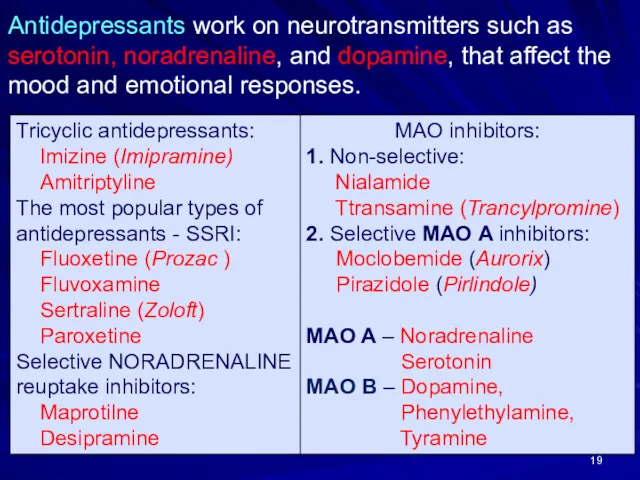


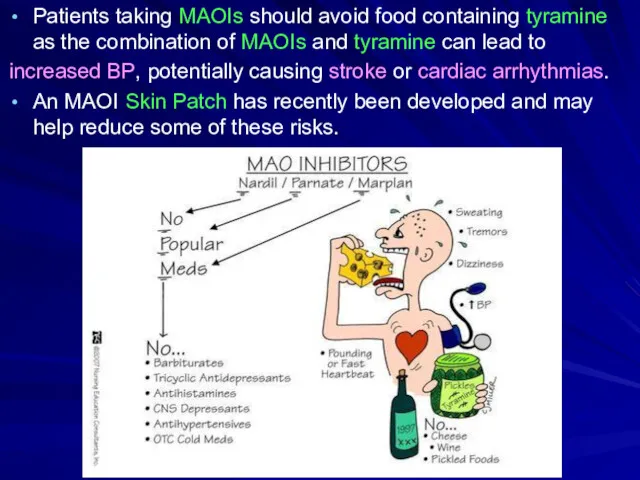

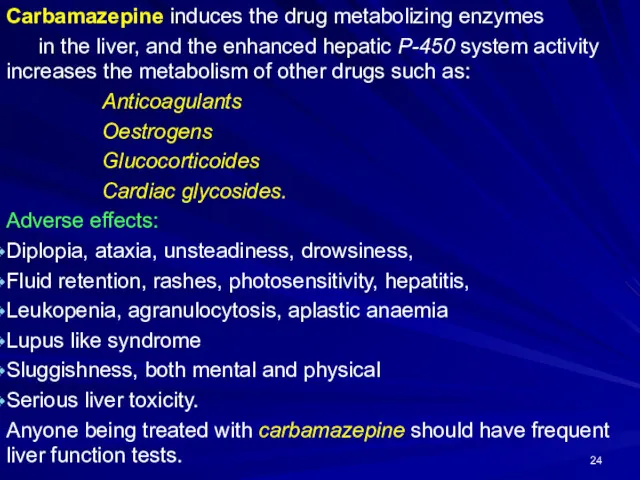
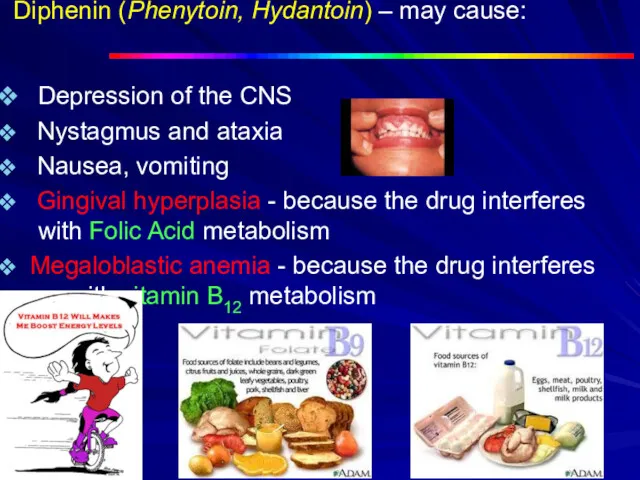
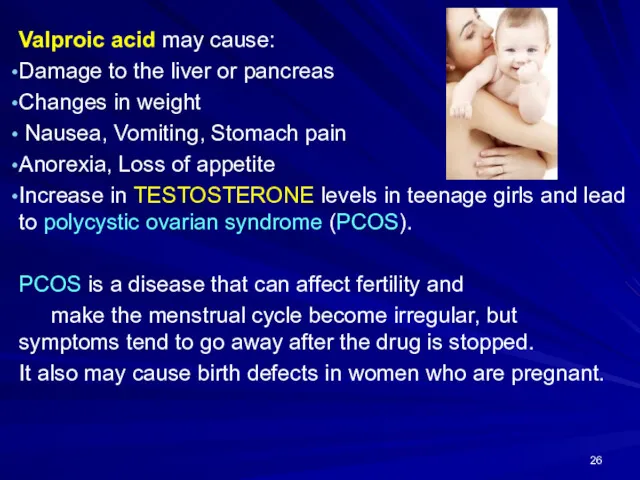
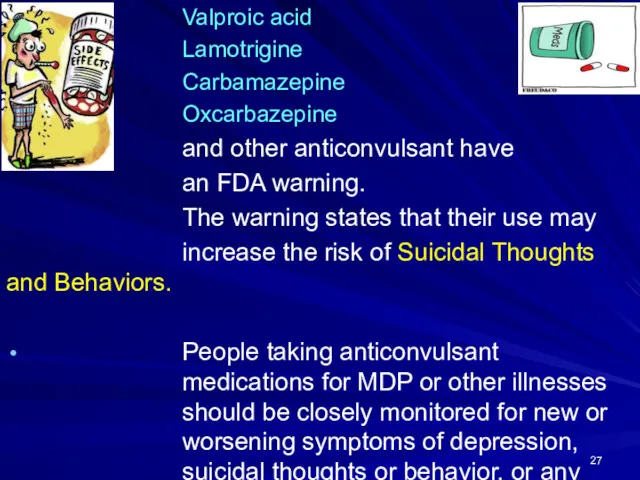
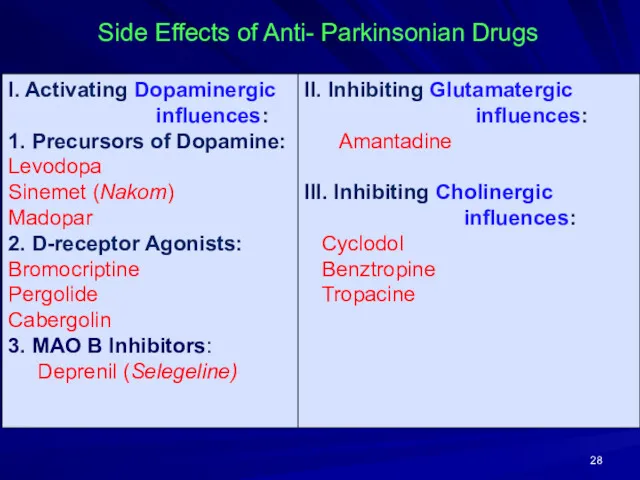
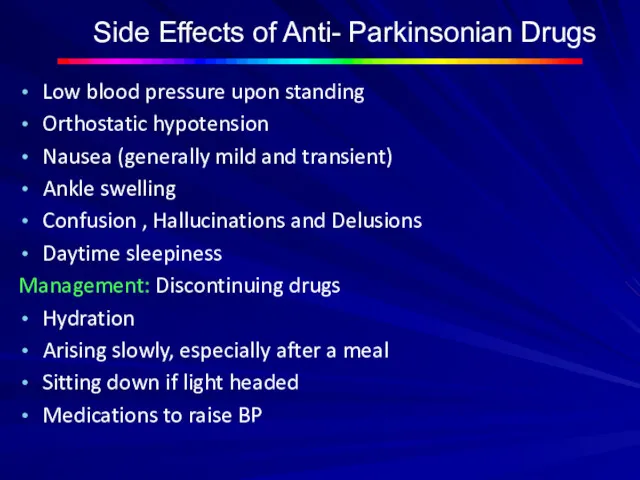
 Рентгенологическая диагностика патологии лёгких
Рентгенологическая диагностика патологии лёгких Психофизиология эмоций
Психофизиология эмоций Стандартизация лекарственного растительного сырь
Стандартизация лекарственного растительного сырь Этапы доказательной медицины в работе с Pico. Второй и третий этапы
Этапы доказательной медицины в работе с Pico. Второй и третий этапы Егіз жүктілік
Егіз жүктілік Болезни роговицы
Болезни роговицы Тұқым қуалайтын ауруларды емдеу принциптері
Тұқым қуалайтын ауруларды емдеу принциптері Подкомиссия врачебной комиссии по экспертизе профпригодности
Подкомиссия врачебной комиссии по экспертизе профпригодности Косметология. Определение и классификация
Косметология. Определение и классификация Ревматоидный артрит
Ревматоидный артрит Обезболивание родов
Обезболивание родов Снотворные, противоэпилептические и противопаркинсонические средства
Снотворные, противоэпилептические и противопаркинсонические средства Медицина и первая помощь
Медицина и первая помощь Пропаганда здорового образа жизни, как средство профилактики наркомании среди подрастающего поколения
Пропаганда здорового образа жизни, как средство профилактики наркомании среди подрастающего поколения Рациональная фармакотерапия болевого синдрома – акцент на НПВС
Рациональная фармакотерапия болевого синдрома – акцент на НПВС Лекарственная форма порошки
Лекарственная форма порошки Врожденные пороки развития
Врожденные пороки развития Болезни сердца при беременности
Болезни сердца при беременности Хронический панкреатит
Хронический панкреатит Нормативно-правовые основы профессиональной деятельности младшего медицинского персонала
Нормативно-правовые основы профессиональной деятельности младшего медицинского персонала Антиген. Врожденный и адаптивный иммунитет
Антиген. Врожденный и адаптивный иммунитет Вміст вуглекислого газу в класній кімнаті та вплив його концентрації на розумову діяльність учнів
Вміст вуглекислого газу в класній кімнаті та вплив його концентрації на розумову діяльність учнів Основы психиатрии. Введение в психиатрию
Основы психиатрии. Введение в психиатрию Эклампсия у собак
Эклампсия у собак Прием пациента в стационар. (Лекция 1)
Прием пациента в стационар. (Лекция 1) Аллергия. Аллергены. Этиология аллергических заболеваний
Аллергия. Аллергены. Этиология аллергических заболеваний Юдин Сергей Сергеевич
Юдин Сергей Сергеевич Российская рок-исполнительница Земфира
Российская рок-исполнительница Земфира